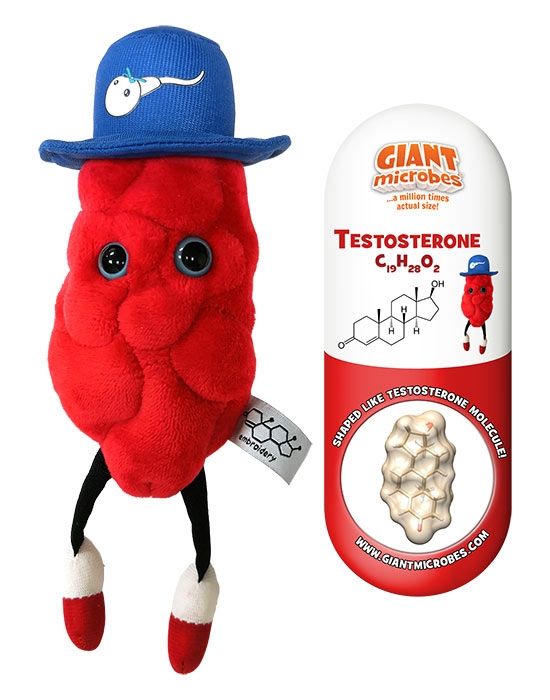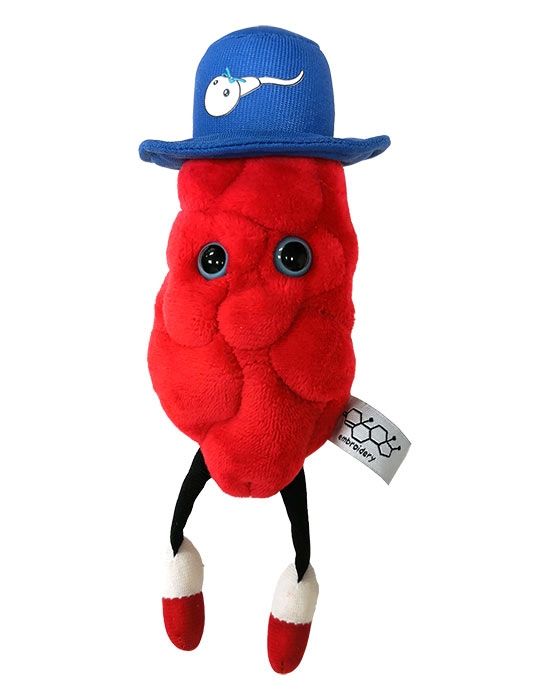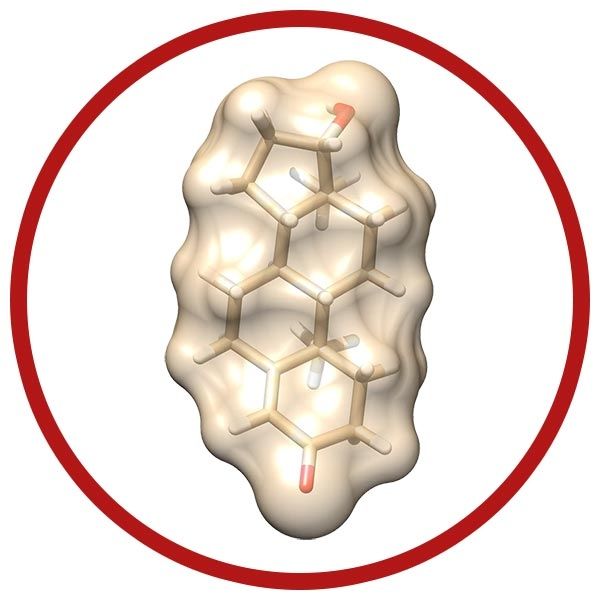Testosterone
Our Testosterone is based on the shape of the actual molecule!
Product Details
Additional Information
| Sizes | Giantmicrobes are based on actual microbes, cells, organisms and other critters, only 1,000,000 times actual size! Gigantic (GG) 16-24" XL (XL) 10-15" Original (PD) 5-8" Keychain (KC) 2-4" with clip |
|---|---|
| Materials | Plush from all new materials. Stuffed with polyester fiber fill. Surface washable: sponge with water & soap, air dry. |
| Packaging | Each plush microbe includes a printed card with fun, educational and fascinating facts about the actual microbe or cell. |
| Safety | Every product meets or exceeds U.S. and European standards for safety. For ages 3 and up. |
All about Testosterone
Facts: Testosterone is the male sex hormone responsible for the development of muscles, body hair, deeper voice and other male characteristics during puberty. Before birth it is involved in the growth of male sex organs, while during adulthood it plays a role in the sex drive, sperm production and the maintenance of overall health. Testosterone's role in bad behavior is largely a myth. There is a lot more to this hormone than its reputation might suggest.
In men, testosterone is produced by the testicles with a small amount made in the adrenal glands. Women need testosterone too and the ovaries and adrenal glands produce it in low amounts. The brain’s hypothalamus and pituitary gland control testosterone production. It is synthesized in the body from cholesterol, although having high cholesterol does not lead to more testosterone.
Testosterone is a type of androgen, also known as a steroid. Like all hormones, testosterone is a chemical messenger secreted by one body tissue that then travels to another tissue to affect growth and behavior. Hormones are secreted in bursts in amounts that change hourly and daily, and vary during each stage of life. Both men and women need the proper amount of testosterone to develop and function normally. The optimal amount is far from clear for men, whose normal range is 300 to 800 nanogram per deciliter (ng/dL). After age 30, most men will encounter a gradual decline in testosterone levels. But abnormal levels are not usually due to aging, rather this could be a sign of a hormonal disorder, injury, liver or kidney disease, diabetes or infection. Low levels can lead to a drop in sperm count, mood changes, and lower bone and muscle mass. Synthetic steroids may be prescribed to treat such conditions. Testosterone is also a key player in prostate and some other cancers.
Abnormally high testosterone levels in men typically occur in athletes who use it to grow muscle and boost performance. This can lead to serious health problems including impotence, low sperm count, stunted growth, heart damage, mood swings and liver disease.












